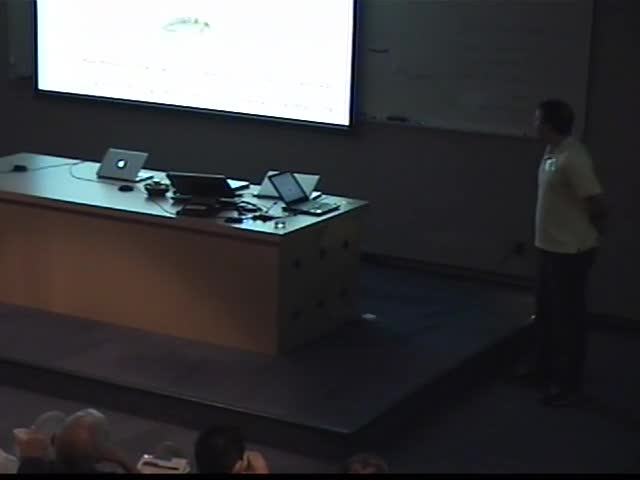Experiments and models reveal principles of locomotion of the sand-swimming sandfish lizard
Presenter
June 5, 2010
Abstract
In this talk I will summarize our recent progress in experiments and models of the locomotion of a sand-swimming lizard, the sandfish ({\em Scincus scincus}). We use high speed x-ray imaging to study how the 10 cm-long sandfish swims at 2 body-lengths/sec within sand, a granular material that displays solid and fluid-like behavior. Below the surface the lizard no longer uses limbs for propulsion but generates thrust to overcome drag by propagating an undulatory traveling wave down the body. While viscous hydrodynamics can predict swimming speed in fluids like water, an equivalent theory for granular drag is not available. To predict sandfish swimming speed, we develop an empirical resistive force model by measuring drag force on a small cylinder oriented at different angles relative to the displacement direction and summing these forces over the animal movement profile. The model correctly predicts the animal's wave efficiency (ratio of forward speed to wave speed) as approximately 0.5. The empirical model agrees with a more detailed (and more accurate) numerical simulation: a multi-segment model of the sandfish coupled to a multi-particle Molecular Dynamics simulation of the granular media. The agreement between models and the prediction of biological wave efficiency demonstrate that the non-inertial swimming occurs in a frictional fluid and the Molecular Dynamics simulation allows us to visualize the self-generated fluid surrounding the sandfish as it swims. We use the principles discovered to construct a sand-swimming physical model (a robot) which, like in our empirical and multi-particle numerical model, swims fastest using the preferred sandfish wave pattern.
